Comprehensive Guide to Flat Clearance in Bills Waste Management
Understanding Flat Clearance
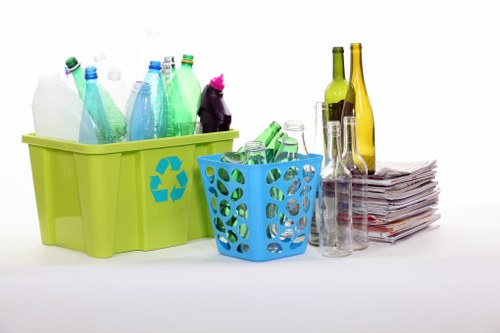
Flat clearance is a crucial service in the realm of waste management, particularly within bills waste systems. It involves the efficient removal and disposal of waste materials from residential flats, ensuring cleanliness and compliance with local regulations.
Effective flat clearance not only enhances the living environment but also contributes to sustainability by promoting proper waste segregation and recycling. Residents and property managers alike benefit from streamlined processes that minimize clutter and reduce environmental impact.
In urban areas, where space is at a premium, flat clearance services must be adept at handling a variety of waste types, from everyday household refuse to bulky items that require specialized disposal methods.
Importance of Bills Waste Management
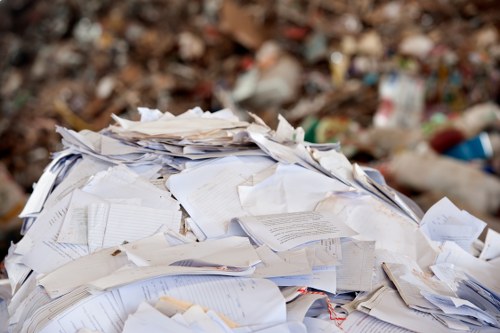
Bills waste management is integral to maintaining public health and environmental standards. Improper disposal of waste can lead to pollution, attract pests, and contribute to the spread of diseases. Therefore, efficient waste management systems are essential for any residential complex.
Moreover, effective waste management supports recycling initiatives, which are vital for conserving natural resources and reducing the carbon footprint. By segregating waste at the source, flats can participate actively in broader environmental conservation efforts.
Additionally, responsible waste management practices can lead to cost savings for property owners and residents by minimizing the need for frequent waste collection and reducing the volume of waste that requires disposal.
Steps Involved in Flat Clearance
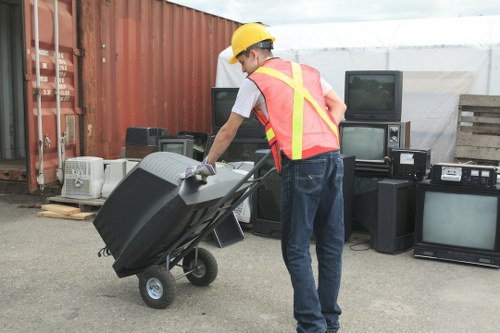
The flat clearance process typically involves several key steps to ensure that waste is handled properly:
- Assessment: Evaluating the types and volumes of waste to determine the appropriate disposal methods.
- Segregation: Separating recyclable materials from non-recyclable waste to facilitate efficient processing.
- Collection: Gathering waste from designated areas within the flat or building.
- Transportation: Moving the collected waste to treatment or disposal facilities.
- Disposal: Final disposal of waste in an environmentally responsible manner, such as through recycling or energy recovery.
Each step requires careful planning and execution to ensure compliance with local regulations and to promote environmental sustainability.
Challenges in Flat Clearance
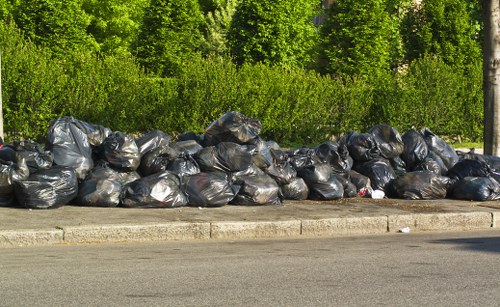
Despite the clear benefits, flat clearance and bills waste management face several challenges:
- Space Limitations: Urban flats often have limited space for waste storage, necessitating efficient scheduling and rapid clearance.
- Diversified Waste: The variety of waste types, including hazardous materials, requires specialized handling and disposal methods.
- Resident Compliance: Ensuring that all residents adhere to waste segregation and disposal guidelines can be difficult.
- Cost Constraints: Implementing comprehensive waste management systems can be expensive, posing financial challenges for property owners.
- Regulatory Compliance: Navigating the complex web of local waste management regulations requires expertise and diligence.
Addressing these challenges involves adopting innovative solutions, investing in education and training, and fostering a culture of sustainability among residents.
Benefits of Professional Flat Clearance Services
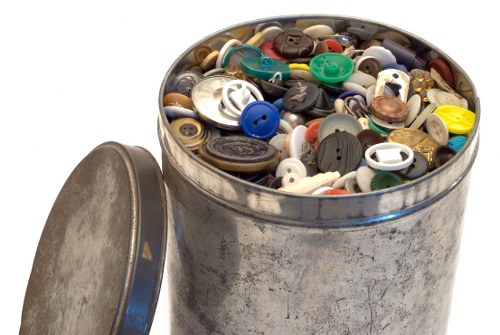
Engaging professional flat clearance services offers numerous advantages:
- Efficiency: Experienced professionals can perform waste clearance swiftly and effectively, minimizing disruption to residents.
- Expertise: Knowledgeable staff ensure that waste is handled according to best practices and regulatory requirements.
- Convenience: Outsourcing waste clearance allows property managers and residents to focus on their daily activities without the burden of managing waste disposal.
- Environmental Responsibility: Professional services are more likely to implement sustainable waste management practices, contributing to environmental conservation.
- Cost-Effectiveness: Though there is an upfront cost, professional services can reduce long-term expenses by optimizing waste management processes.
Choosing the right flat clearance service provider is essential for maximizing these benefits and ensuring a clean, healthy living environment.
Choosing the Right Flat Clearance Service

Selecting an appropriate flat clearance service involves considering several factors:
- Reputation: Look for providers with positive reviews and a track record of reliability.
- Services Offered: Ensure that the provider offers comprehensive services that meet your specific waste management needs.
- Cost: Compare pricing structures to find a service that offers good value without compromising on quality.
- Compliance: Verify that the provider adheres to all relevant waste management regulations and standards.
- Flexibility: A service that can accommodate your schedule and specific requirements will enhance the overall experience.
By carefully evaluating these factors, you can select a flat clearance service that aligns with your needs and promotes effective waste management.
Implementing Effective Waste Management Practices

To maximize the effectiveness of flat clearance, it's important to implement robust waste management practices:
- Education: Inform residents about proper waste segregation and disposal methods.
- Scheduled Collections: Establish regular waste collection times to prevent accumulation and ensure timely clearance.
- Recycling Programs: Encourage the separation and recycling of materials to reduce the overall waste footprint.
- Hazardous Waste Handling: Develop protocols for safely disposing of hazardous materials to protect health and the environment.
- Monitoring and Evaluation: Regularly assess waste management processes to identify areas for improvement.
These practices contribute to a sustainable waste management system that benefits both residents and the broader community.
Technological Innovations in Waste Management

Advancements in technology are transforming waste management, making flat clearance more efficient and sustainable:
- Automated Sorting: Machine learning and robotics are enhancing the accuracy and speed of waste sorting, leading to higher recycling rates.
- Smart Bins: Equipped with sensors, smart bins can monitor waste levels and optimize collection schedules.
- Data Analytics: Analyzing waste data helps identify trends, predict waste generation, and improve management strategies.
- Waste-to-Energy: Innovative technologies convert waste into usable energy, reducing reliance on traditional energy sources.
- Mobile Apps: Apps facilitate communication between residents and waste management services, streamlining the clearance process.
Incorporating these technologies can significantly enhance the effectiveness of flat clearance in bills waste management.
Environmental Impact of Effective Flat Clearance

Proper flat clearance has a positive impact on the environment by:
- Reducing Landfill Use: By promoting recycling and waste reduction, the dependency on landfills decreases.
- Lowering Carbon Emissions: Efficient waste management processes contribute to a reduction in greenhouse gas emissions.
- Conserving Resources: Recycling conserves natural resources and reduces the need for raw material extraction.
- Preventing Pollution: Proper disposal prevents pollutants from entering air, water, and soil systems.
- Promoting Biodiversity: Healthy environments support diverse ecosystems, which are essential for ecological balance.
These environmental benefits underscore the importance of implementing effective flat clearance strategies.
Legal Regulations and Compliance

Flat clearance services must comply with various legal regulations to ensure responsible waste management:
- Local Waste Disposal Laws: Regulations dictate how different types of waste should be handled and disposed of.
- Health and Safety Standards: Ensuring the safety of workers and residents during the clearance process is paramount.
- Environmental Protection Laws: Compliance with laws aimed at protecting the environment from pollution and degradation.
- Licensing Requirements: Waste management companies must obtain the necessary licenses to operate legally.
- Reporting Obligations: Regular reporting may be required to demonstrate compliance with waste management regulations.
Staying informed and adhering to these regulations is essential for any flat clearance service provider.
Cost Factors in Flat Clearance

The cost of flat clearance can vary based on several factors:
- Volume of Waste: Larger amounts of waste typically incur higher disposal costs.
- Type of Waste: Hazardous or specialty waste may require specialized handling, increasing expenses.
- Frequency of Collection: More frequent collections can lead to higher overall costs.
- Service Provider: Different companies may offer varying pricing structures based on their service quality and efficiency.
- Geographical Location: Disposal fees and transportation costs can vary depending on the area.
Understanding these factors can help in budgeting and selecting a service that offers the best value for your specific needs.
Best Practices for Residents

Residents play a crucial role in effective flat clearance and bills waste management by adopting best practices:
- Waste Segregation: Separate recyclable materials from general waste to facilitate efficient processing.
- Reduce Waste Generation: Opt for reusable products and minimize the use of single-use items.
- Proper Storage: Use appropriate containers to store waste, preventing spills and odors.
- Timely Disposal: Dispose of waste regularly to avoid accumulation and potential health hazards.
- Participate in Recycling Programs: Engage in community recycling initiatives to support broader environmental goals.
By following these practices, residents can contribute significantly to the success of flat clearance operations.
Future Trends in Waste Management

The future of waste management in flat clearance is poised for innovation and improvement:
- Circular Economy: Emphasizing the reuse and recycling of materials to create a sustainable economic model.
- Advanced Recycling Technologies: Developing more efficient methods for breaking down and repurposing waste materials.
- Community Engagement: Increasing participation and awareness among residents to foster collective responsibility.
- Policy Enhancements: Strengthening regulations to support sustainable waste management practices.
- Integration with Smart Cities: Utilizing technology to create interconnected waste management systems that enhance efficiency.
These trends indicate a move towards more sustainable and technologically advanced waste management systems, benefiting both residents and the environment.
Conclusion

Flat clearance in bills waste management is an essential service that ensures the cleanliness, health, and sustainability of residential environments. By understanding the processes, overcoming challenges, and adopting best practices, both service providers and residents can contribute to effective waste management.
As technology advances and environmental awareness grows, the future of flat clearance looks promising, with innovations paving the way for more efficient and sustainable practices. Investing in professional services and fostering a culture of responsibility among residents are key to achieving long-term success in waste management.
Contact us today to learn more about our flat clearance services and how we can help you maintain a clean and sustainable living space.